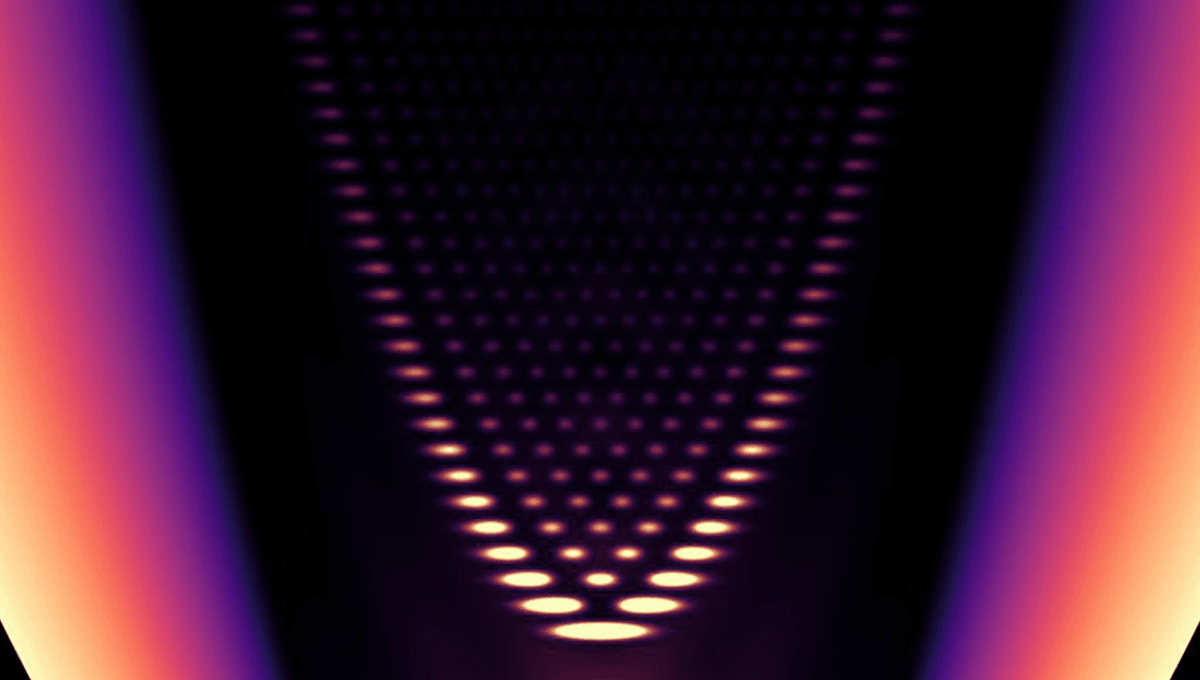
A team of physicists have created a one-dimensional gas out of light, studying the strange properties of this strange state of matter.
When you cool certain particles to near absolute zero, some pretty interesting things can start to happen. In particular, something called “Bose Einstein Condensate” (BEC) can form, a state of matter first hypothesized by Albert Einstein based on the work of theoretical physicist Satyendra Nath Bose. When a gas of bosons – subatomic force-carrying particles that have integer spin – are cooled to temperatures approaching absolute zero, they form a single quantum object, often compared to it acting as a single atom.
“The wave function of a BEC corresponds to the ground state of a macroscopic quantum object,” one paper on the topic explains. “In other words, a collection of atoms in a BEC behaves as a single quantum entity.”
In this strange new state of matter, first created in the real world in 1995, you get a macroscopic look at quantum behavior.
It has plenty of weird properties, including zero viscosity. You get some of this stuff in a glass, it will crawl up the side of the glass. They can sustain vortices that can be used to create analog black holes, and explode in a way similar to a supernova, termed a bosenova. It’s pretty clear why you’d want to study this stuff.
You can create BEC out of anything that obeys Bose Einstein statistics. This is easier with bosons – subatomic particles with integer spin – though you can create it too with fermion pairs, known as Cooper pairs, where the half spins add up to an integer, allowing fermions to occupy the same quantum state.
Photons, god bless them, obey Bose Einstein statistics and so can be turned into a BEC without any complicated pairing. In the new study, a team from the University of Bonn and the University of Kaiserslautern-Landau in Germany did just this, though with the added complication of creating the condensate in one and two dimensions.
“To create these types of gases, we need to concentrate lots of photons in a confined space and cool them simultaneously,” Dr Frank Vewinger from the Institute of Applied Physics explained in a statement.
To do so, the team filled a miniscule, reflective container with a dye solution, before exciting the dye solution with a laser. With nowhere to go, the light photons bounced of the walls until they collided with dye molecules. It was these collisions that cooled the photons, until eventually the photon gas condensed.
How the team created a Bose-Einstein Condensate out of light in a previous experiment.
By altering the surface of the container, the team was able to trap the cooled photons into one or two dimensions.
“We were able to apply a transparent polymer to the reflective surfaces to create microscopically small protrusions,” Julian Schulz, from the University of Kaiserslautern-Landau explained. “These protrusions allow us to trap the photons in one or two dimensions and condense them.”
“These polymers act like a type of gutter, but in this case for light,” lead author Kirankumar Karkihalli Umesh added. “The narrower this gutter is, the more one-dimensionally the gas behaves.”
While regular two-dimensional BECs are interesting enough in themselves, the team was able to study the gas on one dimension (essentially crammed into a tiny point) and two dimensions, as well as the transition between the two dimensions.
“Things are a little different when we create a one-dimensional gas instead of a two-dimensional one,” Vewinger explains. “So-called thermal fluctuations take place in photon gases but they are so small in two dimensions that they have no real impact. However, in one dimension these fluctuations can – figuratively speaking – make big waves.”
These fluctuations of temperature in one dimension mean that the whole BEC does not act the same, with different regions acting differently, like a degenerate quantum gas.
“We have now been able to investigate this behavior at the transition from a two-dimensional to a one-dimensional photon gas for the first time,” Vewinger added.
The team discovered that though two-dimensional BECs occur at specific temperatures approaching absolute zero – like how water transitions to ice at 0°C (32°F) – there wasn’t a precise condensation point for one-dimensional photon gases.
While interesting, and with potential applications for quantum optical effects, it is still early days for research into the one-dimensional condensate, which the team hopes to explore further in future studies.
The study is published in Nature Physics.
Source Link: Physicists Turn Light Into A One-Dimensional Gas With Incredibly Strange Properties